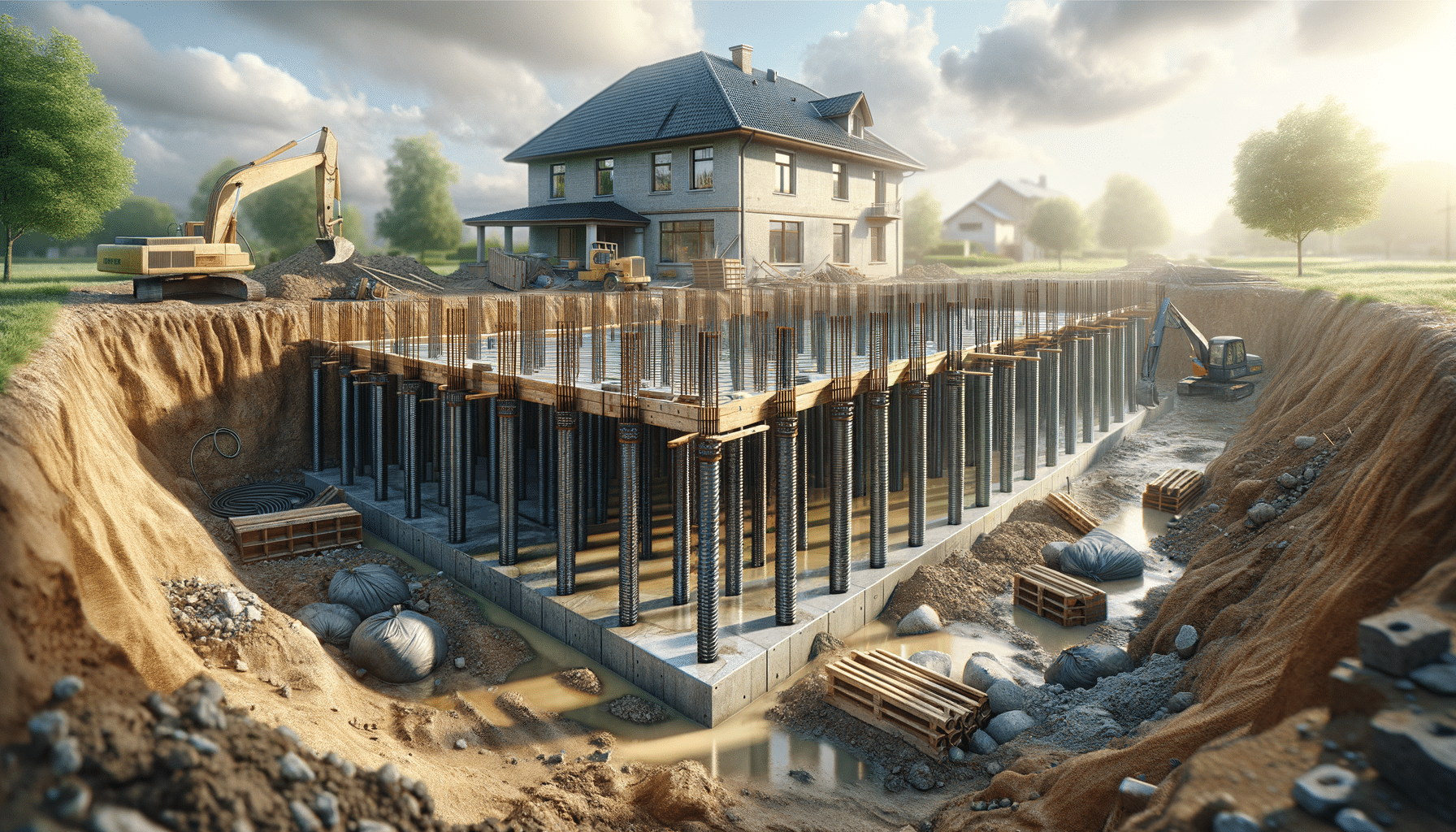
Foundation Repair Methods: Signs & Solutions
Understanding Foundation Issues
Foundation issues can be alarming for any homeowner, as they often present themselves in subtle yet potentially damaging ways. A foundation is the backbone of a home, and its integrity is crucial for the overall stability of the structure. Common signs of foundation problems include cracks in walls, uneven floors, and doors or windows that stick or won’t close properly. These symptoms often arise from underlying issues such as soil movement, poor drainage, or plumbing leaks.
Soil movement is one of the leading causes of foundation problems. It occurs when the ground beneath a home shifts due to changes in moisture content, often exacerbated by poor drainage systems. Additionally, plumbing leaks can introduce excess moisture into the soil, leading to further instability. Undersized or improperly installed supports can also contribute to foundation issues, as they may not adequately handle the weight of the structure. Identifying these signs early and understanding their root causes is essential for implementing effective repair solutions.
Methods of Foundation Repair
Once foundation issues are identified, it’s vital to explore the available repair methods to ensure a lasting solution. Several techniques are employed by professionals to address specific problems, each with its own set of advantages. One common method is underpinning, which involves strengthening the foundation by extending it deeper into more stable soil. This is often achieved through the use of piers or piles.
Another popular technique is slabjacking, used primarily for concrete slab foundations. This method involves injecting a grout mixture beneath the slab to lift it back to its original position. It’s a cost-effective solution for addressing settlement issues caused by soil subsidence. In cases where the foundation is severely damaged, complete replacement may be necessary, though this is typically considered a last resort due to its complexity and cost.
Each repair method has its pros and cons, and the choice often depends on the specific circumstances of the foundation issue. Consulting with a professional can help homeowners determine the most appropriate course of action for their situation.
Basement Waterproofing Techniques
Basement waterproofing is a critical aspect of maintaining a dry and healthy home environment. Water intrusion in basements can lead to mold growth, structural damage, and a host of other problems. There are several techniques available to prevent water from entering a basement, each suited to different types of moisture issues.
Exterior waterproofing involves sealing the foundation walls from the outside to prevent water from penetrating. This is often done using waterproof coatings or membranes applied to the exterior walls. Additionally, proper drainage systems, such as French drains, can be installed to direct water away from the foundation. Interior waterproofing focuses on managing water that has already entered the basement. This can include installing sump pumps to remove water and using sealants to patch small leaks.
Both exterior and interior waterproofing techniques can be used in conjunction to provide comprehensive protection against water intrusion. Regular maintenance and inspection of these systems are crucial to ensure their continued effectiveness.
Home Improvement and Renovation Considerations
Home improvement and renovation projects offer homeowners the opportunity to enhance their living spaces, increase property value, and address functional issues. Whether it’s updating a kitchen, adding a new room, or improving energy efficiency, careful planning and execution are key to successful outcomes.
Before embarking on a renovation project, it’s important to set a realistic budget and timeline. Prioritize the areas that require the most attention, and consider the long-term benefits of each improvement. For instance, upgrading insulation and windows can lead to significant energy savings over time. Working with experienced contractors and designers can also help bring a homeowner’s vision to life while adhering to building codes and regulations.
Renovations can be disruptive, so it’s important to plan for temporary living arrangements if necessary. It’s also wise to communicate clearly with contractors and stay informed about the progress of the project. With careful planning and execution, home improvement projects can greatly enhance both the aesthetic and functional aspects of a home.
Conclusion: Ensuring a Safe and Comfortable Home
Maintaining a home involves a commitment to both its structural integrity and aesthetic appeal. Foundation repair, basement waterproofing, and home improvement projects are essential components of this commitment. By understanding the signs of foundation issues, exploring effective repair methods, and implementing comprehensive waterproofing techniques, homeowners can protect their investment and ensure a safe living environment.
Home improvement projects, when carefully planned and executed, can enhance the comfort and value of a property. Whether addressing necessary repairs or pursuing aesthetic upgrades, homeowners have a wide range of options to consider. By staying informed and working with professionals, homeowners can make informed decisions that lead to successful outcomes.
In the end, a well-maintained home provides not only shelter but also a sense of pride and satisfaction. By addressing foundation issues, preventing water intrusion, and pursuing thoughtful renovations, homeowners can enjoy a comfortable and secure living space for years to come.


